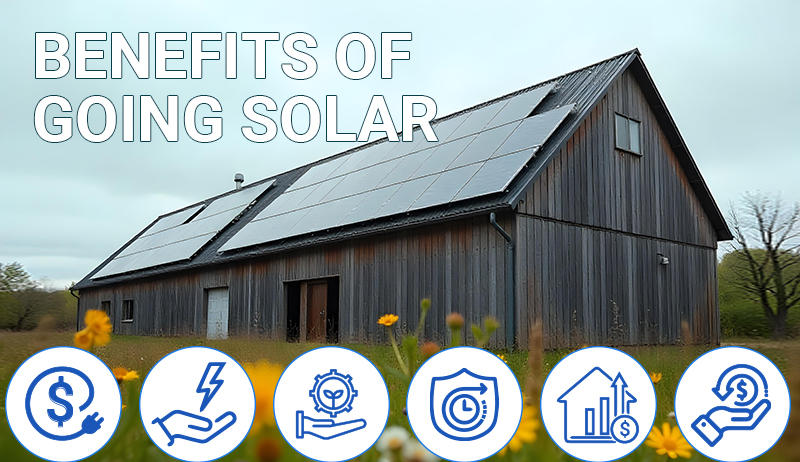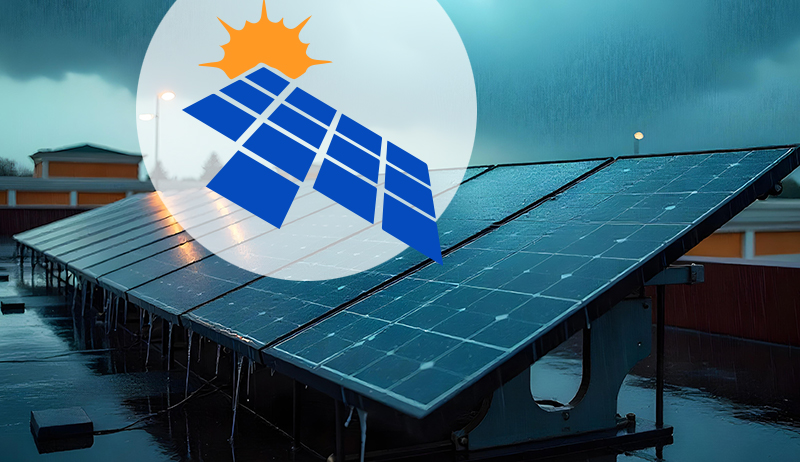Weather Guard Lightning Tech

Wind Turbine Cost: How Much? Are They Worth It in 2025?
by Dan Blewett
How much does a wind turbine cost in 2025? While renewable energy is no longer a “new” idea and large, green energy wind farms are more common – and more efficient – the combination of technology, construction, and operating expenses mean that a wind turbine’s initial cost is very expensive.
And calculating the “simple” cost of a wind turbine isn’t simple at all. Current projections for the cost of an offshore turbines cost is about $1.5M per Megawatt of power produced – meaning a 10MW wind turbine would come to about $15,000,000. But myriad factors go into the actual calculations.
For regular updates on wind turbine costs and the technology , people and policies driving the industry, follow the Uptime Wind Energy Podcast and subscribe to Uptime Tech News. It’s free! Subscribe now: https://substack.com/@uptimetechnews

Header image credit: GE Vernova
This article provides the numbers you need to understand how much does a wind turbine cost, do they actually pay for themselves over time, and is the upfront investment worth it?
As development for offshore wind farms has accelerated, over the past 20 years, the Biden Administration created some additional opportunities in the industry in the United States. As wind anticipated a second Trump administration, the economics of wind energy in the US were initially called into question. But both wind and the larger renewables market are bigger than shifting political policies. Since the renewable energy transition is well underway all over the world, the US is almost certain to remain a significant player. The mix of onshore and offshore wind energy is one of many unknowns that will affect the market, and specifically, the initial cost of a wind turbine.
When considering the cost of a wind turbine, it seems reasonable to pick one model of turbine to compare costs “apples to apples.” That alone is a daunting task, with cost estimates for off-shore wind more difficult to pin down than onshore wind, and costs of turbines designed for even modest-sized onshore wind farms vary based on the conditions of various wind farm locations.
Calculating even an “average” cost of a wind turbine in 2025 is a complicated math problem – actually, it involved numerous math problems and multiple conditions. We’ll explore several “solutions” to this problem.
In 2024, there were hints that manufacturers may reduce the number of models that they offer, for two basic reasons: profitability, and engineering reliability. If you’re not familiar with the wind energy market, it helps to start with a bit of an industry overview to understand how wind turbine costs are determined.
Are Wind Energy costs REally going down? Is Wind Energy Getting Too Cheap?
In recent years, wind turbine manufacturers like Siemens have expressed concerns that the cost of wind energy is getting too low to maintain the development and growth of the market. Rising costs, and government pricing structures present constant challenges to manufacturers.
In 2022, Nordex raised its turbine prices (approximately 12%) due to cost increases and rising interest rates; other turbine manufacturers increased prices as well. In 2023, wind turbine prices were more steady. Midway through the year, Nordex, based in Germany, recorded an average selling price of €890,000/MW or about $965,000/MW USD. [1]
In May 2023, Siemens’ Tim Dawidowsky famously commented, “it’s all about cash.” Obviously, Dawidowsky wanted to see European turbine makers get more money – and he’s not alone. When we reported on Dawidowsky’ s comment in an Uptime Podcast episode, we explained it in context with other concerns about energy pricing strategies. Nothing happens in a vacuum, and wind energy costs – including almost every piece of hardware in a wind turbine – are affected by myriad global factors more than most industrial products .
Of those factors, energy costs are the most difficult to pin down. Because different countries finance energy in vastly different ways, the industry absolutely does not enjoy a level playing field. While many European countries control energy developments outright – and other countries, like the US, has a long history of incentives and subsidy programs – it is difficult to determine actual costs, true profits and losses, and almost impossible to compare energy costs between nations. Even ‘simple’, hard costs – like blade and nacelle structures – fluctuate due to political policies and how they are expected to influence future prices.
The Biden administration’s IRA (Inflation Reduction Act) committed billions to green energy incentives from 2021-2024, and the effects of some of those programs continue. For weekly discussions on wind industry business and technology, listen to the Uptime Wind Energy Podcast here.
How Much Does a Wind Turbine Cost Initially?
For commercial wind turbines, the answer is millions of dollars per turbine.
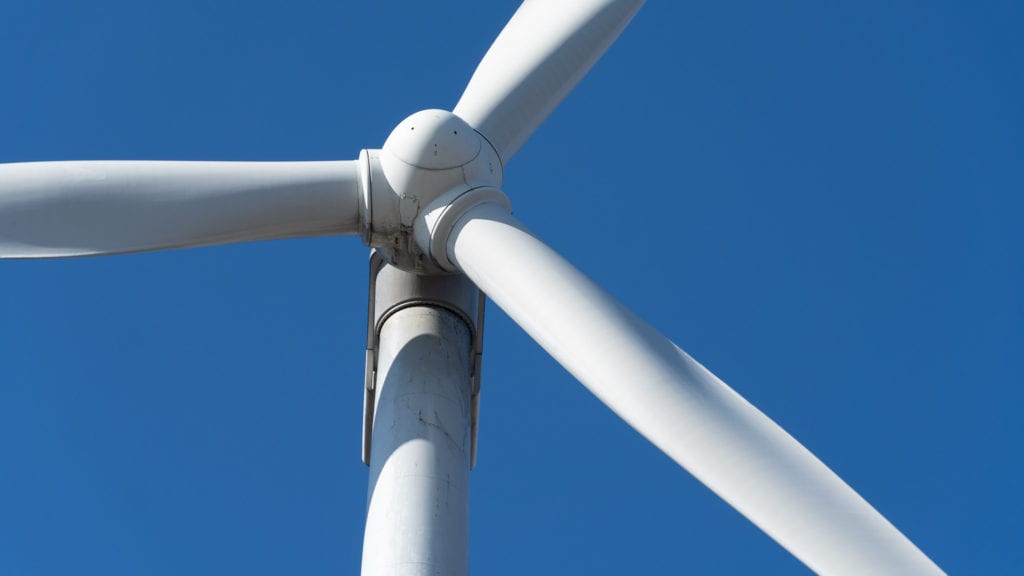
Wind turbines cost a lot, and as such the investment is to be recouped over a long period of time.
Turbines produce significant electricity and sell it back to local power utilities where it flows to the power grid, to be used by homes and businesses.
The Breakdown of Initial Wind Turbine Costs
- $2.6 – $4 million per average-sized commercial wind turbine
- Typical cost is $1.3 million per megawatt (MW) of electricity-producing capacity
- Most commercial wind turbines have a capacity of 2-3 MW, but offshore turbines can be as large as 16-18 MW
- Cost increases as turbine size increases, though there are benefits to using fewer, larger turbines – complexity and construction of the overall farm site is greatly reduced with fewer and larger turbines.
Interested in Wind Energy? Check out Our Wind Energy Podcast: Uptime
Listen to Uptime on Any Podcast Platform
Costs vary widely around the world. Why? It’s complicated
From Australia to Brazil to Canada to the UK, energy project are developed (read: funded and subsidized) in vastly different ways, largely due to different forms of governments. But there are many other stickier issues that make determining the cost of a wind turbine more difficult than your average accounting problem.
Different countries “adjust” the cost of materials, labor and land though artificially (or actually) reducing wages, and adding tariffs and taxes. In the US, well-intentioned initiatives like the Jones Act can increase the initial cost of wind turbine manufacturing – but in the long term, they should increase the value of the country’s wind energy market. The US isn’t the only country that creates such political constraints. Since 2022, throughout 2023, 2024 and well into 2025, the Jones Act is significantly impacting offshore wind turbine costs. In one August 2024 podcast episode, we detailed some of Orsted’s financial troubles. (Orsted is based in Denmark.) For more information on the business side of wind turbine costs and overall industry growth, listen to the Uptime Wind Energy Podcast every week. It’s eye-opening!
Wind Turbine Maintenance Costs
Once built, maintenance is an ongoing expense.
- 1-2 cents per kilowatt-hour produced, or
- $42,000 – $48,000 per year
Operation and maintenance costs can be significant, but all of these machines are long-term investments continue to (hopefully) pay for themselves over time.

A wind turbine study using German data showed that these costs can be 1-2 Eurocents per kilowatt hour (kWh) produced, on average.

This number climbs as the the turbine ages, which is not surprising considering the wear and tear and harsh environments these machines operate in.
How Operation & Maintenance Requirements Impact Wind Turbine Cost
Operation & maintenance (O&M) typically includes the following:
- Insurance
- Land costs, rent and taxes
- Service, repair and spare parts
- Administrative tasks
- Power (it does take some electricity to run)
- Miscellaneous
These recurring costs are not too significant, and the turbine will significantly outproduce the maintenance costs.
Repairs can be a significant capacity reducer (more on this later), and lightning strikes on wind turbines can be a real problem.
Though turbine blades leave the factor with a lightning protection system, often they are inadequate.
Especially for offshore wind turbines–where transporting workers for repair is costly and time-consuming–additional layers of lightning protection is important.
Products like segmented lightning diverters can provide additional protection from lightning strike damage to wind turbines.
How Much Electricity Does a Wind Turbine Produce?
We’ve covered costs, so now lets turn to the big question: how much electricity does a wind turbine generate?
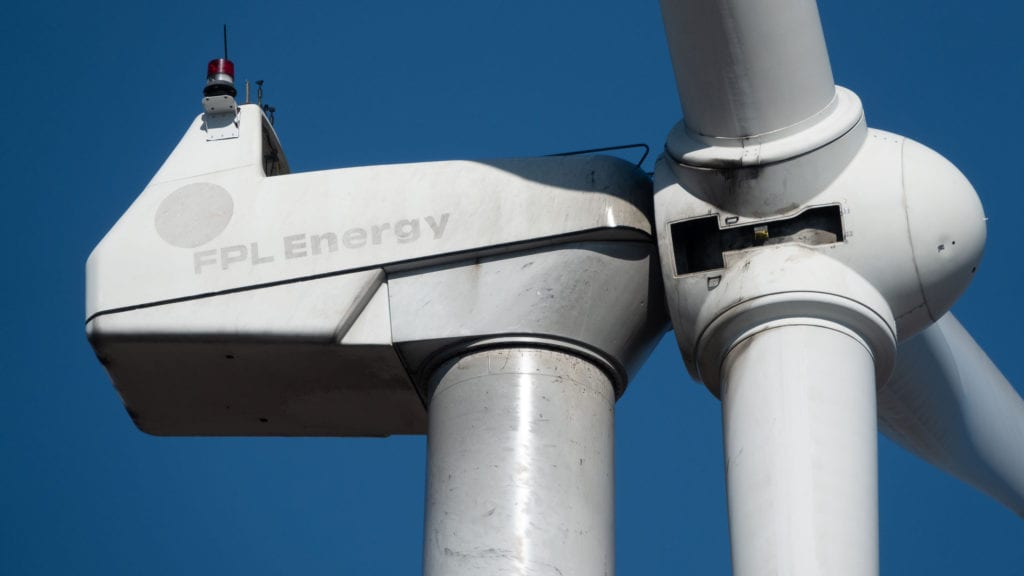
Wind turbines are sized in megawatts (MW), which refers to their capacity to create electricity.
One megawatt = 1,000,000 watts of power. One megawatt can power about 1000 homes for a month but in reality, wind turbines don’t come close to producing their rated capacity because of changing wind speeds.
Size of the Wind Turbine Affects Electricity-Producing Capacity
Wind turbines cost more the bigger they get, but they produce more electricity with larger nacelles and turbine blades.
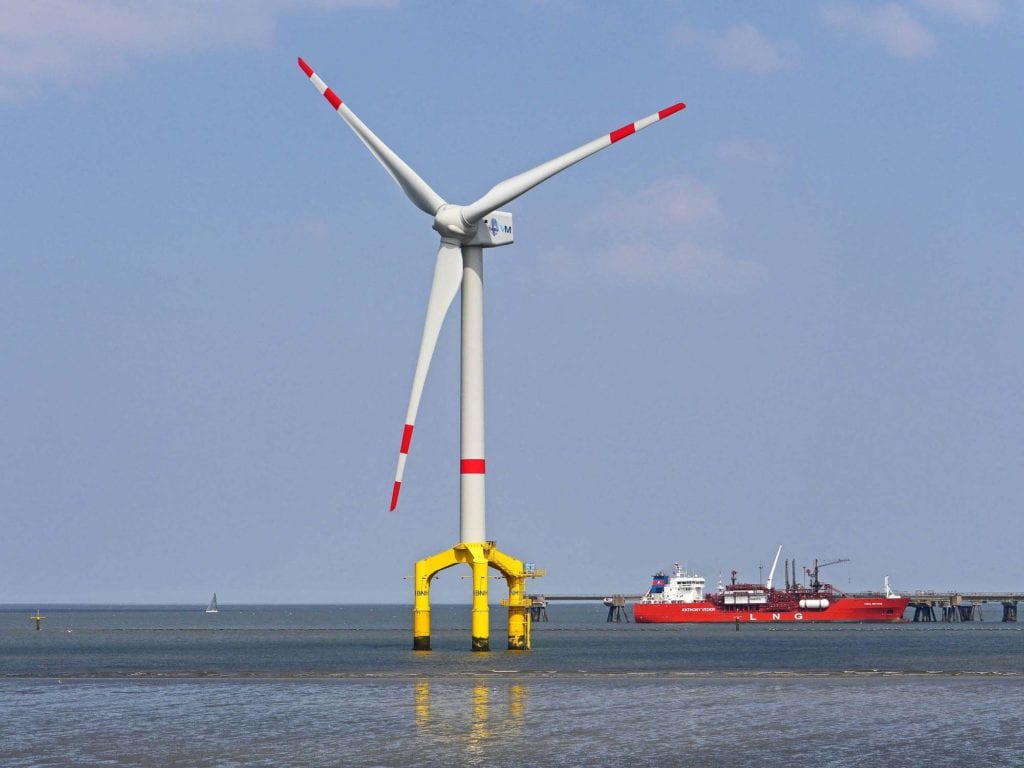
In its latest report on average rotor diameter size, Statistica said rotors for onshore wind turbines had risen to 129 meters (423 feet).
Common commercial wind turbine sizes in megawatts:
- 1.5 MW (onshore, or land-based)
- 2.5 MW (onshore)
- 4 MW (onshore)
- 6-8 MW (offshore)
- Up to 15 MW (GE Haliade-X produces 12 MW and the Siemens Gamesa SG 14-222DD is a 15MW Turbine)
Offshore wind farms choose larger wind turbines in part because of the high cost of installing them and transporting the electricity, as well as the increased efficiency they gain with consistent, faster wind speeds.
It’s preferable to build one turbine rather than many smaller ones because fewer towers and ground anchoring systems have to be constructed, making everything less complicated.
Wind Speed & Direction Affects “Capacity Factor” in Electric Production
At full wind speed, a turbine can produce at it’s full capacity. If a turbine is rated for 2.5 MW, then at peak wind speed it will crank out 2.5 MW of power.
Yet, we all know that wind is never constant.
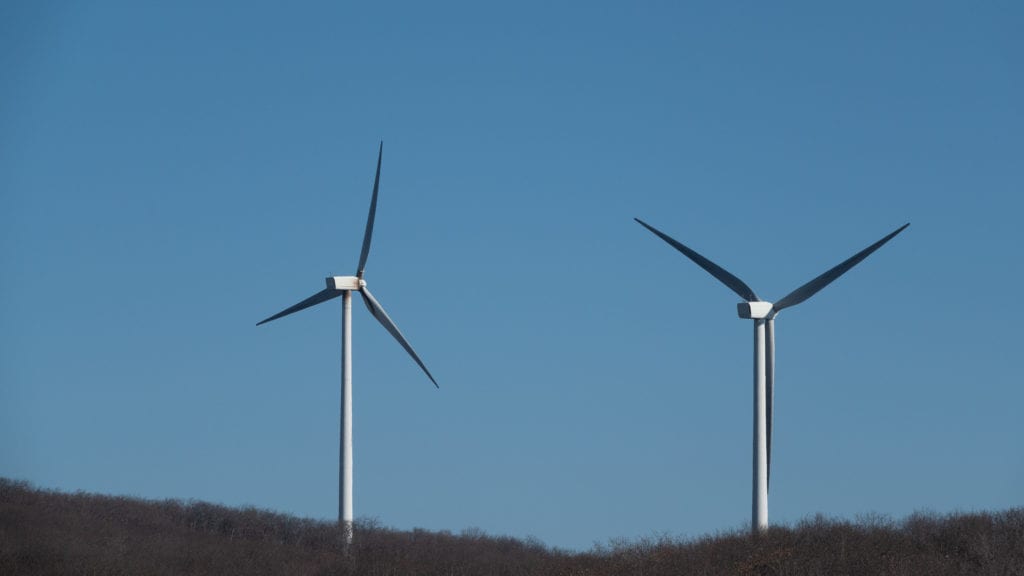
Because the wind dies down, changes direction, etc., overall averages will be much lower, usually in the 30-40% range for onshore wind turbines and up to 65% (occasionally higher in rare circumstances) for offshore turbines.
Biggest Wind Turbine: GE Haliade-X 12-14.7 MW Turbine
The GE Haliade-X is…insane.
This enormous wind turbine was the first to offer 12 MW capacity, with blades 107m (351 feet) long and an overall footprint that reaches 260m (853 feet) into the sky. The Haliade-X offshore turbine features a range of power rating covering 12-14.7MW capacity. Want to buy one? It will run you $12M – $20Million. See how they’re installed:
<iframe width="1344" height="840" src="https://www.youtube.com/embed/XX2-DE0etcQ" title="Haliade-X offshore wind turbine - installation time lapse" frameborder="0" allow="accelerometer; autoplay; clipboard-write; encrypted-media; gyroscope; picture-in-picture; web-share" referrerpolicy="strict-origin-when-cross-origin" allowfullscreen></iframe>Turbines of this size are typically used offshore, where wind speeds are consistently much higher and delivering power is more complicated. Fewer, bigger turbines = easier power transport, fewer long-distance cables and a simpler overall system.
If you’re curious how these turbines stay upright in the crazy waves and wind out to sea, check out this article featuring some great illustrations.
How Much Money Does a Wind Turbine Produce From Electricity it Generates?
Remember that a wind turbine has a maximum rated capacity (such as 4 megawatts), but it will only produce electricity at a “capacity factor” or “load factor” that is a percentage of this maximum.
In the chart below, you’ll find some numbers based on the typical sale price (2019 data) of electrical power created by wind turbines. This power is sold back to the electrical grid of utility companies, and the price has been falling as turbine technology has improved.
This sale of electricity is how wind turbines pay for themselves and create renewable energy.
We want this power to be cheap, and it’s moving in the right direction.

The goal is for turbines to produce at a higher capacity factor, which means they’re creating more electricity for the time they’re in operation. A majority wind farms worldwide are heavily subsidized by government investment, however, wind farms in the US and elsewhere in North America operate in a more businesslike manner.
Many US wind farms not only pay private land owners for the use of their land, the energy producers also contribute mightily to the larger community through direct investment in addition to job creation and tax payments. To learn how some US wind farms contribute to their communities, see this brief overview of Wind Farms featured in the Uptime Wind Energy Podcast in 2024.
Need Lightning Protection For Your Wind Turbine?
Our StrikeTape wind turbine segmented lightning diverters are the most durable, highest-performing product in the world. Wind turbine maintenance costs skyrocket when constantly damaged by lightning strikes, so protect your turbines with the best.
Use StrikeTape lightning protection on your wind farm.
More Wind Turbine Questions & Answers
Check out our common wind turbine questions below, including many about wind turbine cost, specifications and more.
If you have a question, leave it below and we’ll update this article with our answer!
The towers on most commercial wind turbines are in the range of 200-260 feet tall. The blades, often well over 100 feet long, when counted in total height push the number well into the 300s. The Gamesa G87 model wind turbine’s blades reach a height of 399ft.
Wind turbine blade tip speeds regularly range from 120-180 miles per hour, though they vary due to wind conditions. Because of their enormous size (with blades well over 100ft), they look like they’re spinning slowly, when in reality blade tip speeds are very, very fast.
$1,300,000 USD per megawatt. The typical wind turbine is 2-3 MW in power, so most turbines cost in the $2-4 million dollar range. Operation and maintenance runs an additional $42,000-$48,000 per year according to research on wind turbine operational cost. See the National Renewable Energy Laboratory’s website for the most recent (December 2022) Cost of Wind Energy Review.
Yes, and these smaller turbines can now cost less than $1000. Energy production will vary greatly to the size, specs and wind conditions of a person’s home, and some homes may not be suited well for a turbine at all. There’s a reason that wind farms are carefully placed in very wind, often harsh conditions–high winds occur in places people often don’t want to live. If your home doesn’t get consistent, strong wind, it may not make financial sense to install any type of wind turbine. New turbine designs are constantly being proposed and tested.
Unfortunately, they sometimes do, but it’s not the largest threat to the bird population. Cats, and cell phone towers, are far more deadly to the bird population. This article sheds light on the issue: https://www.usatoday.com/story/money/business/2014/09/15/wind-turbines-kill-fewer-birds-than-cell-towers-cats/15683843/.
The number can vary greatly due to factors including size, wind conditions, blade length and of course, average home energy consumption. A typical wind turbine is generally capable of powering 1000-2000 homes in one year. One megawatt of energy production capacity will power about 1000 homes, and many onshore wind turbines have a 2-3 MW capacity.
The capacity factor–or load factor–is the actual power generation over time, rather than the theoretical maximum a turbine could produce. Because wind turbines can’t maintain peak production at all times (not even close) due to changing wind conditions, downtime for service, etc. – it’s important to consider capacity factor when calculating the expected power a turbine can produce over a year or more.
Most recent update May 30, 2024. Original article by Dan Blewett published December 20, 2021. Edited by Dan Blewett and Diane Stresing. The most recent and substantive changes since original publication date are noted below.
[1] (New citation, May 2024 update) https://www.windpowermonthly.com/article/1829900/nordex-sells-16gw-wind-turbines-pricing-holds-steady-q2#
- The largest offshore wind turbines were updated to 18 MW
- The National Renewable Energy Laboratory’s website was added to the frequently asked questions linking to the most recent (December 2022) Cost of Wind Energy Review.
- Statistica’s latest figures on the Global Wind Power Market Statistics and Facts were reviewed in 2023 and 2024 when the latest figures available for most stats were based on a report completed 2021, available here. In January 2025, additional information was referenced from the Global Wind Energy Council’s report based on 2023 data.
- References to recent podcasts and articles have been added.
- This article may be updated periodically and substantive changes will be noted here.
- This article was updated on January 5, 2025, to include some of the latest (2024) wind energy analyses and opinions from global data analytics and solution provider Wood Mackenzie
- This article was previously on September 30, 2024 to include additional complications of breaking down wind turbine costs in various countries due to tariffs, subsidies, and other financial/political differences around the world.
https://weatherguardwind.com/how-much-does-wind-turbine-cost-worth-it/
Renewable Energy
Trump’s Agenda Is Even Far-Reaching Than People May Think
 As Trump’s former lawyer Ty Cobb says at left, in addition to turning the United Stated into an autocratic regime, at the same time, Trump needs to alter history such that future generations don’t think he did anything wrong.
As Trump’s former lawyer Ty Cobb says at left, in addition to turning the United Stated into an autocratic regime, at the same time, Trump needs to alter history such that future generations don’t think he did anything wrong.
Yes, he has his hands full, but he’s assisted by hundreds of traitors in congress, and hundreds of millions of hateful morons in the U.S. electorate.
Renewable Energy
Victoria’s VEU Scheme Introduces New Solar Incentives for C&I Properties
Renewable Energy
Does Evil “Destroy Itself?”
What Aristotle said here is interesting, especially since there has been so must of both evil and good through the millennia. The days since Aristotle have been marked by the Golden Age of Rome (Pax Romana), the Dark Ages, the Spanish Inquisition, the Rennaissance, the Enlightenment, the end of slavery, the slaughter of the Native Americans, the post-Emancipation oppression of Black Americans, the Holocaust, and so many more major historical events.
It seems we’re just about to see what happens to the evil represented by Trump’s second term in office. It seems that the United States has re-elected a man to the highest position on Earth whose only interests are punishing his enemies, enriching himself from public office, further consolidating his power, and keeping himself out of prison.
Will this evil destroy itself?
Again, we’ll have to wait and see.
-
Climate Change2 years ago
Spanish-language misinformation on renewable energy spreads online, report shows
-
Climate Change Videos2 years ago
The toxic gas flares fuelling Nigeria’s climate change – BBC News
-
Climate Change2 months ago
Guest post: Why China is still building new coal – and when it might stop
-

 Greenhouse Gases1 year ago
Greenhouse Gases1 year ago嘉宾来稿:满足中国增长的用电需求 光伏加储能“比新建煤电更实惠”
-

 Climate Change1 year ago
Climate Change1 year ago嘉宾来稿:满足中国增长的用电需求 光伏加储能“比新建煤电更实惠”
-
Greenhouse Gases2 months ago
Guest post: Why China is still building new coal – and when it might stop
-

 Carbon Footprint1 year ago
Carbon Footprint1 year agoUS SEC’s Climate Disclosure Rules Spur Renewed Interest in Carbon Credits
-
Renewable Energy3 months ago
US Grid Strain, Possible Allete Sale

